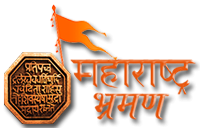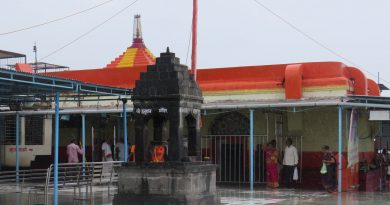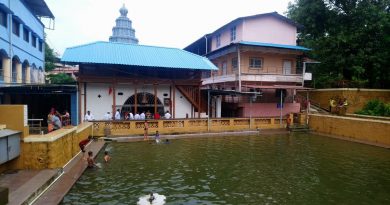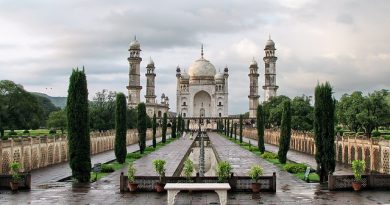Deekshabhoomi
Deekshabhoomi is a sacred monument of Buddhism in Nagpur the City of Oranges. Deekshabhoomi is a place where Dr.Baba Saheb Ambedkar converted into Buddhism and so did his thousands of followers. This conversion of religion took place on October 14th 1956. In the present scenario thousands of people come to Deekshabhoomi and convert into Buddhism.
Deekshabhoomi is situated in Nagpur, Maharashtra, India. Nagpur is the largest city in the state of Maharashtra and is also very famous for “Zero Milestone”. The centre is regarded as the pilgrimage center of Buddhism in India. Thousands of pilgrims visit Deekshabhoomi every year on the occasion of Ashok Vijaya Dashmi and on 14th October. Pilgrims from across the world come and visit Deekshabhoomi.
Deekshabhoomi is the place where not only BUDDHIST but all the people who believe in himself and the way of BUDDHA come together to pray for peace.
It is the place where a step was taken by Dr. Ambedkar against the ugly and hateful religious activites of Hindues or so called Savarnas.
Deeksha literally means acceptance of religion. Deeksha is to Buddhism as Baptism is to Christanity. Bhoomi means land. So, literally Deekshabhoomi means the land where people get converted to Buddhism. Deekshabhoomi is one of the two places of great importance in the life of Dr. Ambedkar, another being Chaityabhoomi at Mumbai. Deekshabhoomi is famous for its architectural beauty and historical importance. It is also one of the main centers of tourism in India. Deekshabhoomi is a sacred monument of Buddhism at the place where Dr. Babasaheb Ambedkar was converted to Buddhism along with thousands of his followers on October 14, 1956 Dr. Ambedkar”s conversion to Buddhism is still a guidance for the masses in India
Dhamma Chakra Stupa, aka Diksha Bhumi, is an important religious Buddhist monument located at Nagpur. It is at this place in 1956 Dr B R Ambedkar initiated the conversion of thousands of Dalit people to Buddhism. This day is celebrated as Ashok Vijaya Dashmi and on this day thousands of followers of Dr Ambedkar and Buddism join this place to offer floral tributes.
Architecture:
History of making
The stupa of the sacred Deekshabhoomi was designed by famous architect Sheo Dan Mal[8]. Construction of the stupa started in July 1978, but it took a long time to finish. Sagar Enterprise of Mumbai, (Mr. H. C. Vakharia and Mr. Sandip Vakharia,) has completed structural work. The stupa was opened for the people on December 18, 2001 after a formal inaugration by the then President of India Dr. K. R. Narayanan
Stupa
Design of the stupa at Deekshabhoomi is based upon the architecture of the world famous stupa of Sanchi. But unlike the stupa of Sanchi, Deekshabhoomi stupa is completely hollow from inside. It is the largest hollow stupa among all Buddhist
stupas in the world.[citation needed] At the ground floor, there is a 211 x 211 feet large square hall. At the centre of this hall, an idol of Buddha is placed. This idol was donated to Deekshabhoomi by Thai students learning in the university of Nagpur. There is also a library and a photo exhibition of the events in the lives of Gautama Buddha and Dr. Ambedkar.
Above the hall, there is a hollow dome. This dome is surrounded by a veranda. On all the four directions of the dome, fountains are there. Above the dome, there is a small slab and a little decorative umbrella. A high quality marble from Dholpur, Rajasthan is used for the flooring of the stupa. The stupa has doors on four directions. The doors open in large arcs, which are decorated with Ashok Chakras, and statues of horses, elephants, and lions, which gives an ancient look.
Around the stupa, there is a garden which is maintained by Nagpur Improvement Trust. Statues of Dr. Ambedkar and idols Gautama Buddha are situated in front of the stupa.
Vihar and the Bodhi Tree
In front of the stupa, on the right hand side, there is a Buddha Vihara with a bronze idol of lord Buddha. Facilities are also made there for the bhikkhus to live. Besides the Vihara, there is the Bodhi Tree, which is a sacred fig tree. This Bodhi Tree was planted at Deekshabhoomi from three branches of the Bodhi Tree at Anuradhapuram in Srilanka. Bhadant Anand Kausalyayan had brought these branches from Srilanka as the memoir of Buddhas enlightenment.
How to reach:
Rail:Nagpur railway station acts as a joint between South-East and central railways. Nagpur is an important rail junction. Many super fast mail and passenger trains connect this city to other major cities in India.
Air:Sonegaon domestic airport at Nagpur is about 6 km away from the city center. This airport is connected to many important cities in India, like Chennai, Mumbai, Kolkata and Delhi. Taxi fare from Nagpur airport to city center is about Rs 150. International travelers can be connected to Nagpur via Mumbai.
Road:State government public transport buses ply between Nagpur and other cities in the state. Tourist bus services at regular intervals are available from Mumbai to Nagpur (467 km).




